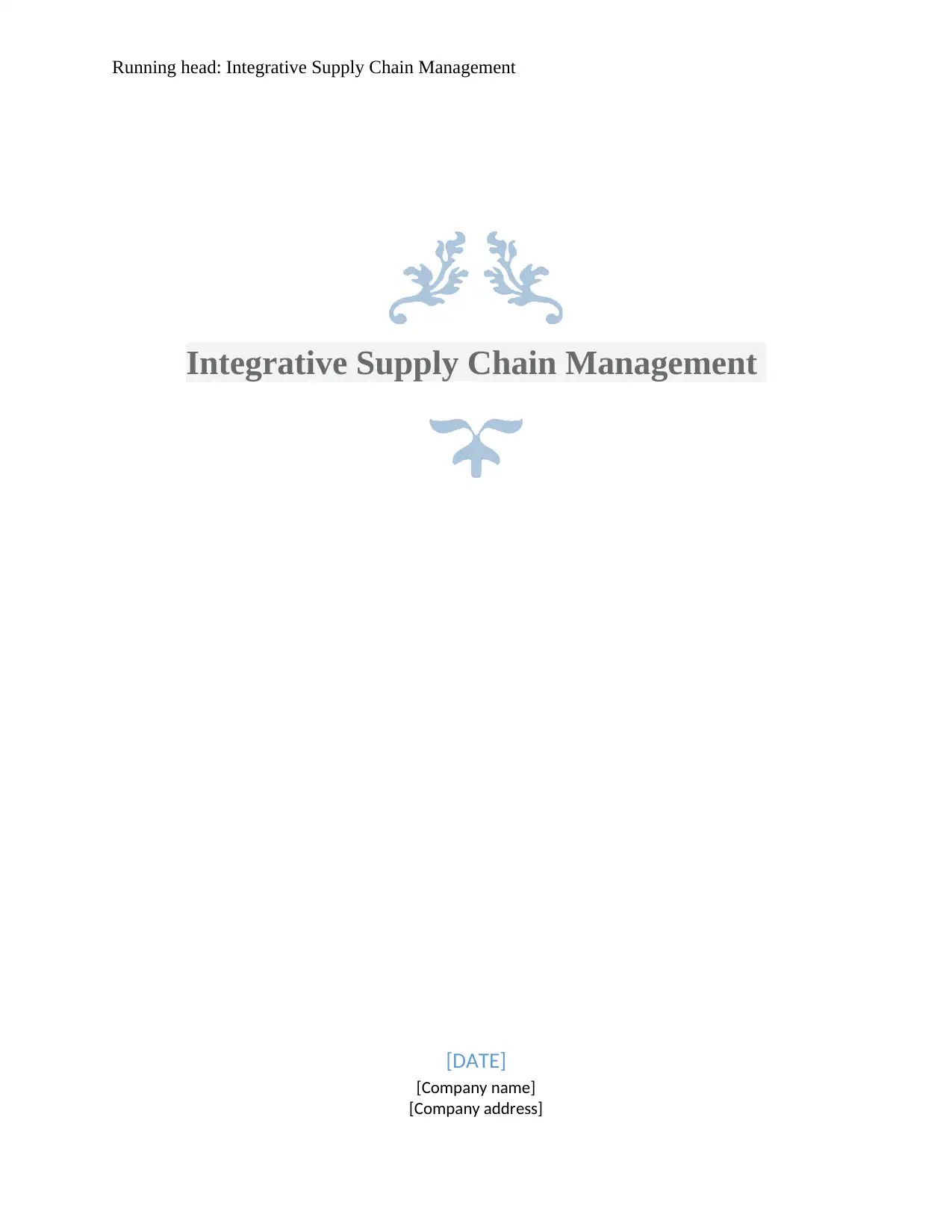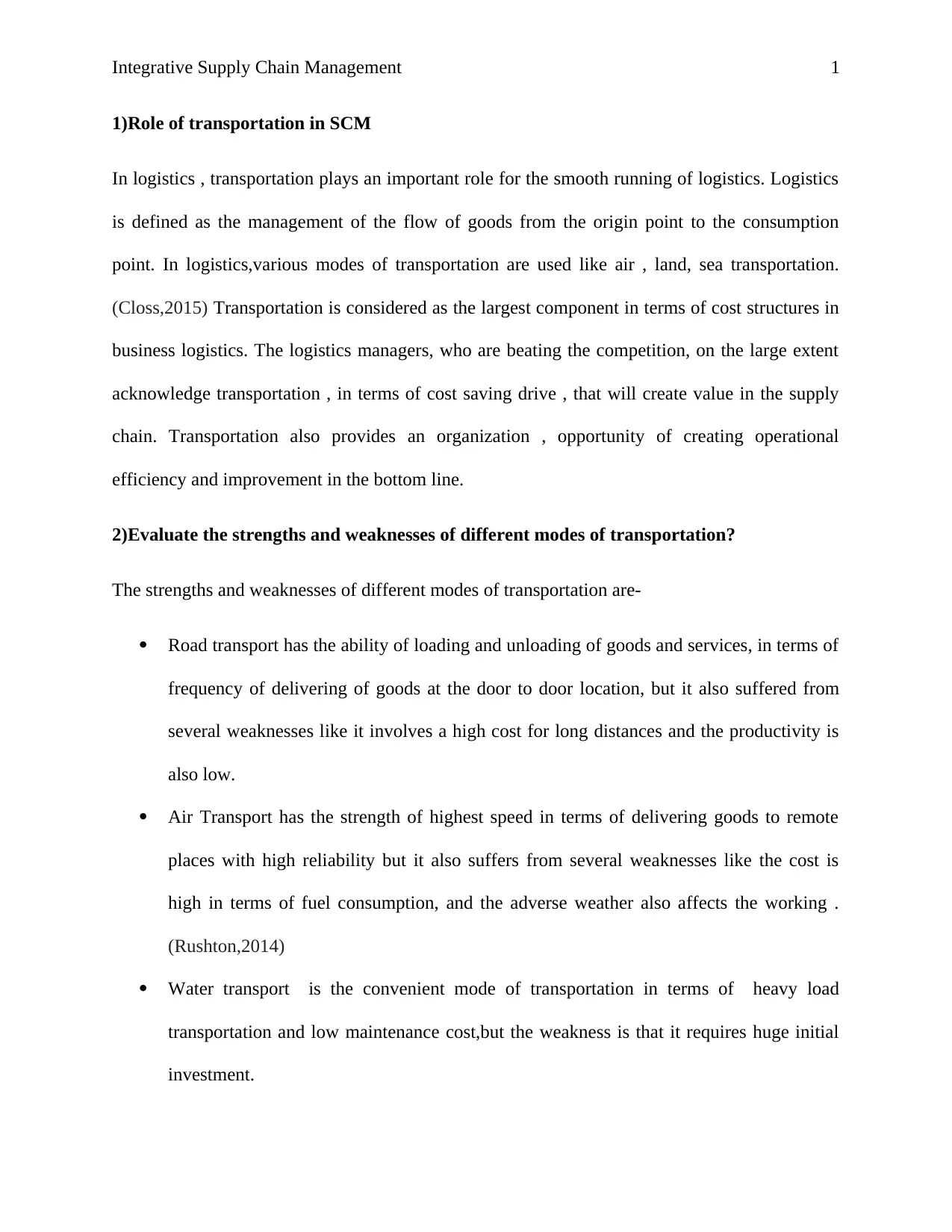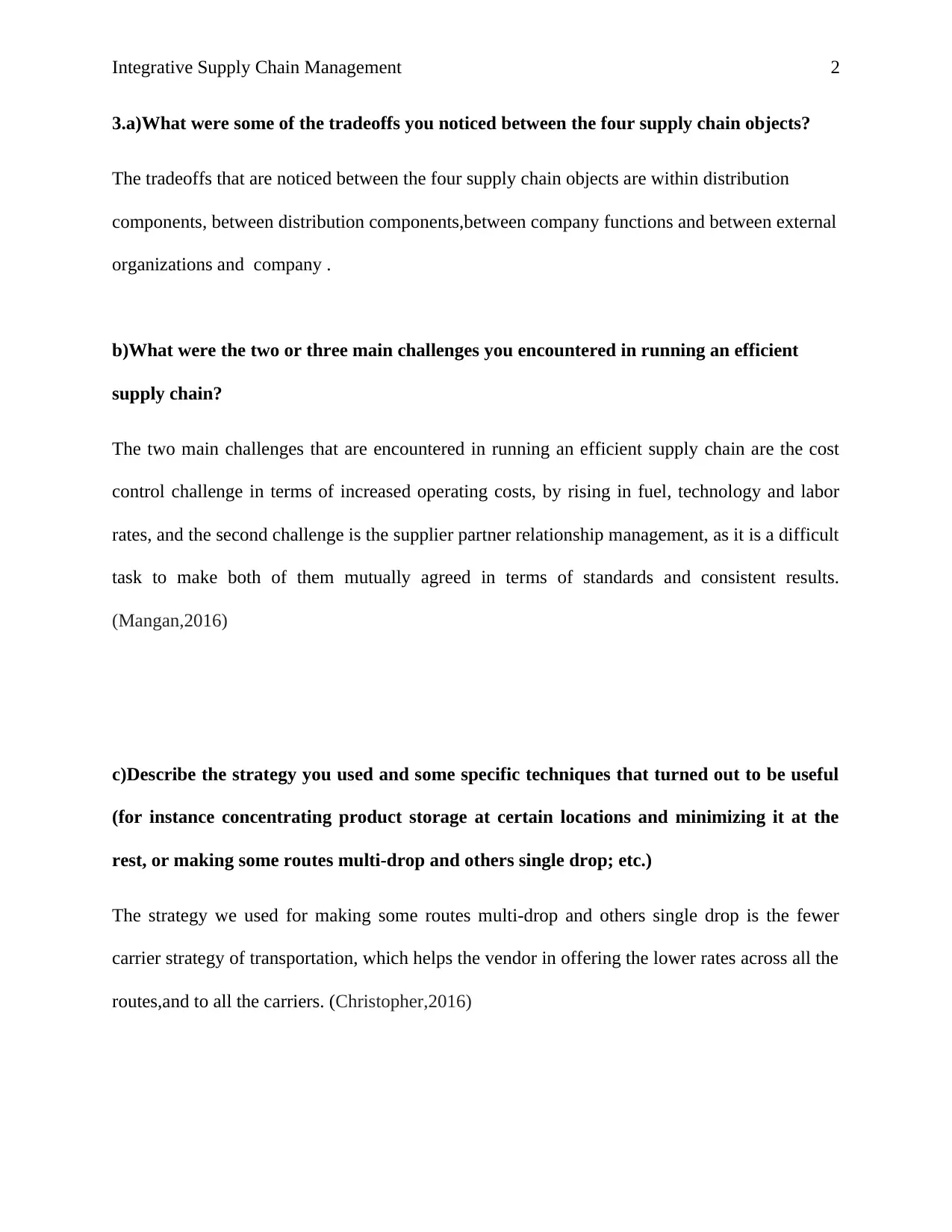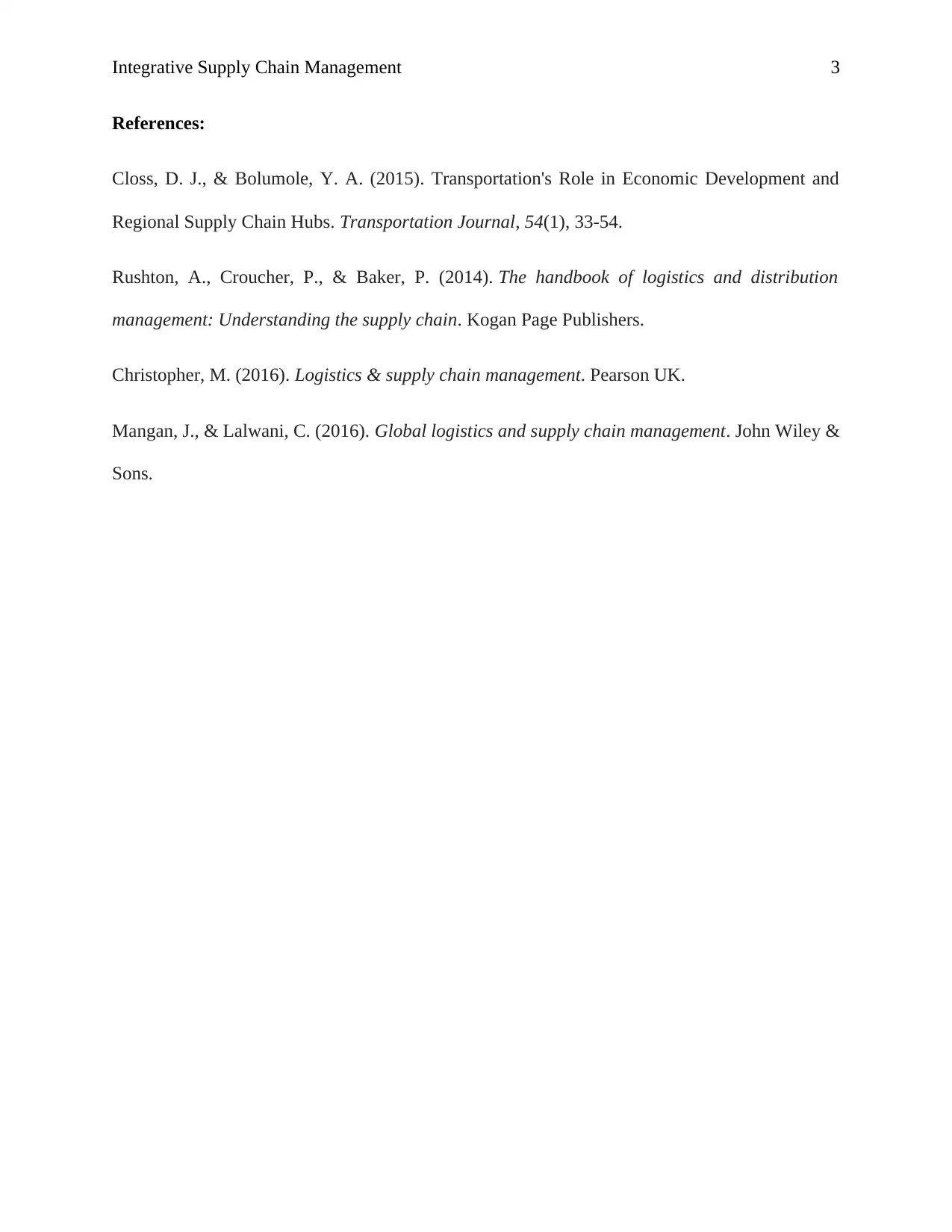Integrative Supply Chain Management Report: Analysis and Strategies
VerifiedAdded on 2019/09/25
|4
|660
|54
Report
AI Summary
This report delves into the intricacies of integrative supply chain management, beginning with an examination of the crucial role of transportation within logistics. It explores the strengths and weaknesses of different modes of transportation, such as road, air, and water. The report then addresses the tradeoffs observed within supply chain components, company functions, and external organizations. Furthermore, it identifies key challenges in running an efficient supply chain, particularly in terms of cost control and supplier partner relationship management. Finally, it outlines a specific strategy employed, such as the fewer carrier strategy, including techniques like the implementation of multi-drop and single-drop routes to optimize transportation efficiency and cost-effectiveness, supported by references from established logistics and supply chain management literature.
1 out of 4











![[object Object]](/_next/static/media/star-bottom.7253800d.svg)